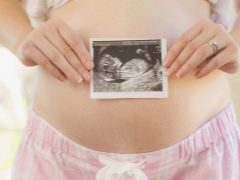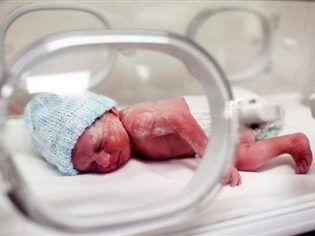Childbirth at 32 weeks gestation
32 week of pregnancy usually proceeds calmly: a woman is on maternity leave, she can rest more. But sometimes it is this week that labor begins. What is the danger of the generic process at this time and what are the forecasts, we will tell in this article.
Special features
32 week of pregnancy is the period at which childbirth is considered early, premature. At 31-32 weeks, the baby is already formed, but its organs and systems are still immature, and the mother's body is clearly not ready for childbirth. Nevertheless, the beginning of the birth process under the influence of many factors at this time is quite possible.
A born child will not be considered a late miscarriage. This is a child, just very small and weak. And now it is very important for him to remain in his mother's tummy as long as possible, because functionally his organs and systems are not ready for independent work. Home births at this time are deadly for the crumbs, but in the conditions of the perinatal center or maternity hospital, where there is an equipped reanimation, qualified neonatologists, there is a chance that the child will survive and grow healthy and strong.
The condition of children born at 32 weeks of gestation is usually regarded as severe. But the kids are quite viable, although it is unlikely to do without the help of resuscitators. The risks at such births are not so great for the mother, because the fetus is still small, it is somewhat easier to give birth than a full-term baby. The main danger exists for the child.
Most often at this time pregnant women who have twins or triplets, pregnant women with pathologies of the placenta, high water, and functional cervical insufficiency are at risk of giving birth. The reasons for giving birth at week 32 can be quite a lot.
Child and his vitality
At 32 weeks outwardly, the baby is formed, but inside his body a lot of processes “debugging and tuning” of organs and systems take place, and therefore birth is now undesirable. Children at this period are thin, their skin still remains red in most cases, since subcutaneous fat is not enough. The growth of children born at this time usually does not exceed 40-41 centimeters, and the weight is in the range of 1500-1900 grams.
The weight of the child plays an important role in predicting its survival. If the pregnancy was pathological, the child suffers from hypotrophy, then he can be born at this time and with a weight of just over a kilogram, which will significantly complicate his condition and the task of doctors to save his life. The amount of subcutaneous fat does not yet allow the child to keep warm after birth, and therefore problems with thermoregulation are, alas, unavoidable. For this reason, the baby will be placed in a special incubator, where certain temperature and humidity will be maintained, and where conditions are created that are as close as possible to the intrauterine.
The second danger is the immaturity of the lung tissue. During this period, the process of accumulation of surfactant in the lungs is underway, but not much has accumulated substances, so that the alveoli can independently straighten out during the first breath. Therefore, it is very likely that the baby will need a ventilator for some time after birth.
At this period, children often appear with the remains of lanugo - body hair. At full-term pregnancy, lanugo disappears closer to the end of the gestation period. In case of premature birth, the baby will get rid of this hair independently some time later. It does not require treatment.The immaturity of the brain, in which hemorrhages in the meninges and tissues are quite likely, also raises questions. The consequences of such hemorrhages can be different: from neurological disorders to severe lesions of the central nervous system, which manifest as cerebral palsy, paresis, mental disorders. The condition of the internal organs usually does not cause major concerns, although the digestive system is also not mature enough, the necessary enzymes are produced little. The remaining organs work normally.
With all the dangers and risks, the modern development of resuscitation care for the smallest people suggests that about 90% of babies born at week 32 survive with the help of doctors. In 86% of cases, children born in the current term not only survive, but also maintain their health. In 9% of cases, children after resuscitation for several years need dispensary observation and treatment by a neurologist and (or) other medical specialists. In 2% of cases, the child is given a disability from an early age. By 1%, statistics are assigned to death within a few days after birth, as well as to stillbirth.
The main task of the doctors is to help the baby live in the incubator until the moment when he gains 2 kilograms. After that, he can be transferred to a special bed with heating, and his condition will no longer be of great concern, although, of course, the baby will require special care. According to statistics, the probability of delivery at week 32 is about 5-7%.
Process nuances
Signs of onset of labor at this time are cramping abdominal and lower back pain, discharge or leakage of amniotic fluid. If the doctors, when they enroll a woman in the maternity hospital at 32 weeks of gestation, find out that she is threatening or beginning to give birth, they will do everything possible to preserve and prolong the pregnancy for at least several days. There are cases when, after incomplete discharge of water, pregnancy could be saved for more than a month.
If the childbirth qualifies as started, then it is not possible to stop the process. In this case, will take delivery. Doctors can actively contribute to the birth of a child if the labor activity is not strong enough and intense. In this case, they will use medicines and other auxiliary methods.
If the birth proceeds too quickly, use drugs that slow down the process somewhat, because rapid delivery increases the risk of injury to the mother and fetus, acute hypoxia. Doctors will not intervene and apply auxiliary benefits, if the birth proceeds normally, according to the classical scheme and from the usual urgent they are only distinguished by the gestational age. Also, at any time, there may be indications for an emergency caesarean section, since preterm labor, in general, is quite often complicated.
Child doctors and resuscitators will be ready. The child may need urgent help right in the labor room.
Women reviews
Births at this period usually begin with the discharge of water, in any case, this is how women who gave birth at 32 weeks describe the onset of the birth process. Responses are different, but more positive examples when children survived and grow up healthy. In the maternity hospital, of course, you have to lie much longer, on the third day they don’t just discharge, and after 8-10 days they often send not home, but to the hospital of the children's hospital, where they continue to treat the child and carefully monitor him.
According to reviews, children develop without significant features, quickly gain weight and catch up with their peers in growth and development.
In the next video you are waiting for the symptoms and causes of preterm labor.


















